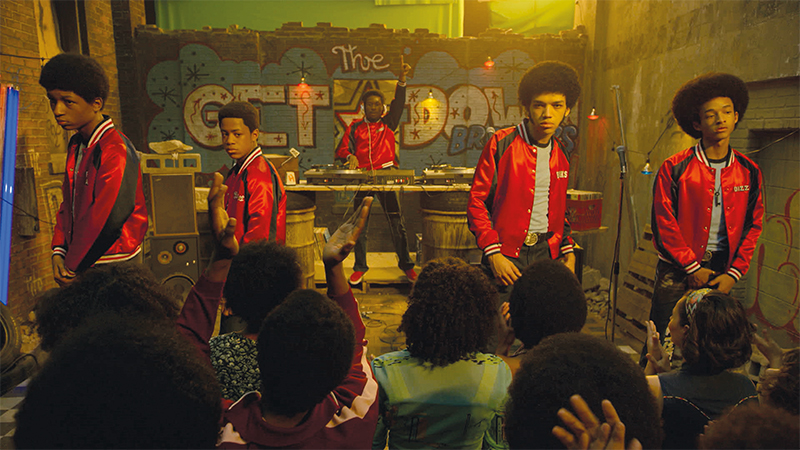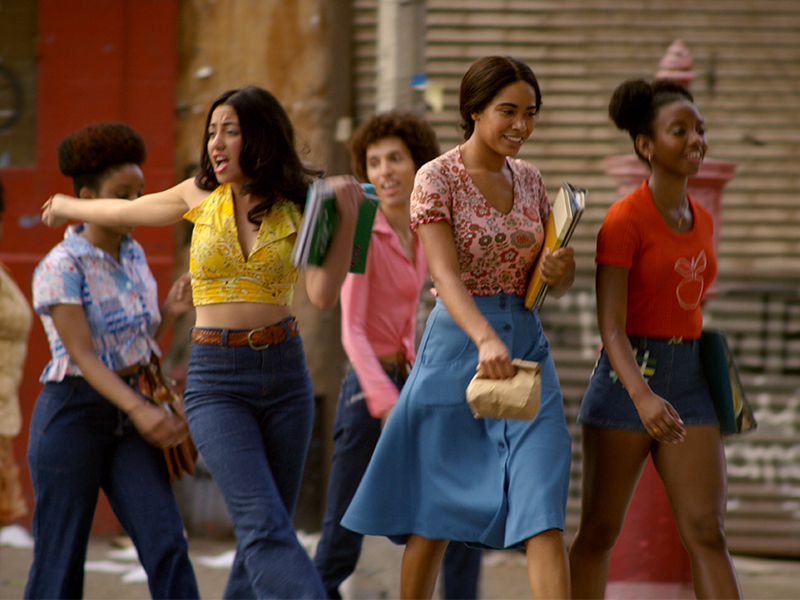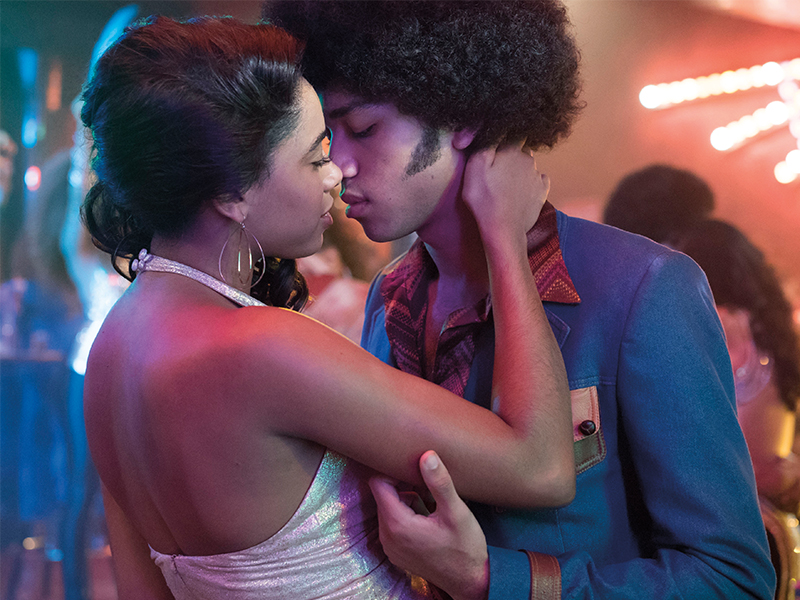When watching a Baz Luhrmann film, you instantly feel as though you’ve been transported to another world. The visionary filmmaker enchants his viewers not only with thoughtful storylines, but with dazzling sets, dizzying cinematography, and daring costumes as well. Luhrmann and Catherine Martin, the Oscar-award-winning costume and set designer responsible for the visuals in his films, truly make a dynamic duo, and their latest television collaboration taps into the same alluring spirit as their blockbuster films.
The Get Down, created by Luhrmann, with Martin acting as executive producer and production designer, premiered on Netflix in August. The music-driven series is set in 1970s New York, and traces the birth of hip hop alongside the evolving disco scene, presenting a new take on an often-untold story. For this series, Luhrmann and Martin collaborated with costume designer Jeriana San Juan to build a wardrobe that would visually portray characters such as hip hop pioneer Grandmaster Flash, a crew of South Bronx teenagers who experiment with rhymes and spray cans, and the stylish singer-songwriter leading lady played by up-and-comer Herizen Guardiola.
We caught up with San Juan on set in New York mid-production earlier this year. We sat in the costume department, surrounded by floor-length trench coats, sparkling platform shoes, wrap dresses, and bell-bottomed jumpsuits, all hanging from countless clothing racks set up from floor to ceiling. Here, she shares her insight on the enduring legacy of ’70s-era fashion, what it was like working with the masterful Luhrmann and Martin, and how costume can contribute to effective character building in a period piece like The Get Down.

S/: Why do you think that ’70s-era fashion has had such a strong presence on the runways recently?
Jeriana San Juan: Seventies influences have been a continuing trend in fashion because the silhouettes are inherently flattering and they have so much flair. They embrace femininity. Bell bottom jeans, for example, make women’s legs look really good. And the colours are also really beautiful—the cranberries, the burnt oranges, the ochre yellows.
S/: It’s interesting, because it’s an era that’s in the past, but it’s so recent that we don’t usually think of it as history yet. It’s just becoming historical to us.
JS: Yeah! I mean, hip hop is now a multi-million dollar industry. And 40 years is not that long ago…. When you think about something coming together in a rec room, a party, a way of looping music together, of rhyming words over music…that it was something that was created entirely out of their own ingenuity and their own creativity…. It’s really interesting to be able to tell that story from a costume standpoint. It’s such a remarkable thing because it was along with the amazing music and graffiti and the street dancing that came the street fashion. So it was a big bang of culture, you know? The universe was created in a big bang, and hip hop was created in a big bang.
S/: So the story is set in both the glamorous disco clubs and the rugged Bronx area. How do you marry those two worlds when you’re thinking about creating these costumes?
JS: I feel like it was always an intention in my collaboration with Baz and Catherine to create a really strong juxtaposition between those two worlds. We want it to feel like our main characters in the Bronx are looking out across the river at a world that felt entirely different, but still a part of their life…. You’re experiencing the world through their eyes, how they were able to make the most out of their circumstances while also striving for a life that was maybe across that river…. We really tried to illustrate disco as glamorously as possible, and when we were in places like a rubble field in the Bronx that was burning down, we really tried to enhance those stories. It was literally a place littered with junk, junkies, and homeless people. It was a community of people living that way, and we showed all the elements. We didn’t try to delicately tiptoe around anything.

S/: In a lot of ways, it sounds like this show is a portrait of New York in that moment. It’s about the city itself.
JS: Exactly, it really is. I mean the city is genuinely another character on the show. You get to see all of the different sides of life in Manhattan—whether it was in the World Trade Center or a tenement apartment.
S/: Could you share some details on how you developed one of the central characters’ look?
JS: In developing Dizzee’s character [Marcus “Dizzee” Kipling—a talented graffiti artist and writer], played by Jaden Smith, we spoke about the character’s interest in fashion and art. I was able to create themes in the costume design based on this and use influences from designers and artists of the time period. This came out in details like the buttons that decorate many items from his wardrobe that are an ode to Patrick Kelly (a famous emerging fashion designer of the time) and the painting and drawing on his clothing which echo themes in the work of Basquiat and Andy Warhol.
S/: In addition to creating some looks from scratch, you also collaborated with designers on recreating key pieces and/or borrowing from their archives. Which designers/brands did you work with and why?

JS: In working with the sneakers from the period it is impossible to recreate them while still being authentic. It was important to incorporate all of the original brands and that included using Puma, Converse, and PRO-Keds. PRO-Keds, for example, was in the midst of relaunching their brand, so it was a match made in heaven. They recreated their original styles that existed during the time period, as did Puma and Converse. Puma lent the original Puma Clyde sneakers you see on the screen. The differences are small between the current version and the original however there are many people who know the differences and the goal was to be authentic in the details. Diane Von Furstenberg, Adrienne Landau, and Halston were also very giving with pieces from their archives.
S/: How do you think costume contributes to character building?
JS: I think costumes are integral to creating character. It’s how we identify them visually through the entire story. It will tell you exactly who they are, how much money they have, what their inspirations are, whether they are creative in their clothing, or whether they care about clothes at all. These are characters who genuinely care about their clothes. They care about how they’re represented in the world. I think that’s something that is really specific to hip hop culture.
